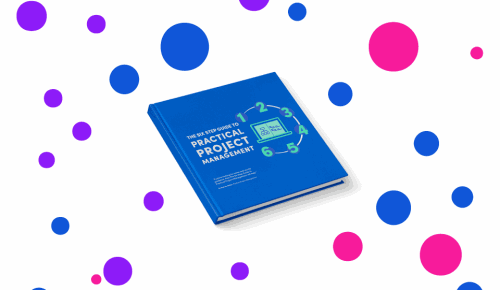Project Management
Project Management can often seem overly complicated so professional project management processes have been broken down to provide you with a simple process that involves the key steps involved for successful project completion- reaching deadlines on time and staying within budget.
Step 1
Discover what your project needs to achieve
There are key pieces of information you need when you start managing a new project:
Purpose
You need to understand the reason for the project, such as the problem it aims to solve or the benefits it will bring, as well as what you will deliver to achieve this.
Objectives
You will need to list the project’s outcomes – what you want the project to have achieved after it is delivered.
Key requirements
You’ll need to identify the top-level requirements under the three headings:
• Scope: What should the project deliver?
• Time: Is there a date this needs to be delivered by?
• Cost (or resources): What’s the budget? What personnel are available?
Major milestones
As well as recording the start date, you should also record the end date you should aim for, only if you know it at this stage, as well as any other key deadlines.
You should find out at this stage who is available to help out with the tasks that will be needed to deliver the project.
Step 2
Find out who is involved and what they want
To ensure project success the right people need to be involved in the process from the beginning. Once you’ve identified your stakeholders, you need to talk to them, to find out what they need from the project (their requirements).
The most valuable way to get their input is the meeting – where you get all the stakeholders together in the one room to brainstorm. By recording information in sessions using the right software, you’ll save time and energy from retyping (and making sense of hastily written notes), compared with using whiteboards or post-it notes. You can use MindGenius for this – it’s easy to capture information quickly.
Step 3
Decide on what you need to deliver
41% of projects fail due to changes in scope mid project (PWC, 2014). It is therefore so important to be completely clear what is and what is not in the scope of the project, so that your stakeholders know what to expect and you can get agreement on the scope.
Present the scope visually and talk through each part (MindGenius is great for this – feel free to give it a try). It gives stakeholders the opportunity to spot gaps and to allow you to ensure that they don’t miss or misunderstand anything.
Step 4
Schedule the tasks
Before deciding on a completion date for your project you will need to estimate how long the tasks will take so a realistic deadline is set.
List, estimate and assign your tasks
For each task, you should estimate how long it would take. Then, you should assign that task to someone – whether that’s you or one of your team.
Visualise your timeline with a Gantt chart
If you use a tool such as MindGenius, you can create and adapt your Gantt chart quickly and easily. By adding dates to each of your tasks you then unlock the ability to automatically turn your map into a Gantt chart. It is easy to adapt, for example, if you need to change the dates or sequence of tasks. You can also assign people to tasks.
Step 5
Manage the work and complete the project
Monitor the progress by paying close attention to each progressing task to make sure nothing slides. Pay attention to your milestones, such as the completion of a phase or deliverable.
Report on the status
The key aspects to report on are the top level deliverables or milestones. You can export your project to PowerPoint, Excel and Word to create a comprehensive report on the status of your project.
By monitoring and reporting on the progress you can effectively deal with any changes before they turn into a major issue and successfully complete the project.
Step 6
Learn Lessons
This step can often be forgotten or ignored however it’s important to identify what went well, what did not and can be done at various stages throughout the project or as a final review. These lessons should then be shared amongst the team and the rest of your organisation so they can be applied to future projects.

